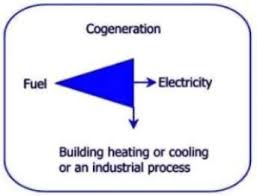 October 2019
October 2019
Toronto was hit with a winter ice storm and summer thunderstorm causing massive power disruptions throughout the city in 2014. While power disruptions have occurred before and since, this was the most severe in recent memory. With the likelihood of more power disruptions in the future, there is a need for communities to plan ahead or accept the consequences of future extended power outages.
Voluntary guidelines of the time included providing enough power to evacuate a building, send elevators to the ground floor, operate fire suppression systems and provide limited lighting to hallways and stairwells. This required 15 minutes to a few hours of power. There was no consideration for having residents remain in their home.
One community, Atrium II, sought a more sustainable solution. They desired a power generation system that would continue to deliver power when the city’s power system failed. This would allow residents to remain in their home during power disruptions with access to elevators and other services that typically fail to function when power goes out. Their goal was to provide 80 percent of power to the building when city power goes out.
Atrium II has since implemented a cogeneration system that simultaneously produces electric power and heat. With this system heat is reused to keep a building warm during cold months or to provide hot water without purchasing external power. Electricity created by the system can be used in place of electricity purchased from an electricity provider to power elevators and other equipment thus reducing electricity cost.
The system went live in late 2017. It’s $1.6 million cost was mostly recovered through a combination of government grants and sharing of future cost savings over a 12-year period.
The cogeneration plant, Canada’s first for a condo building, has been a success. Sustainability has been achieved meaning the building now has 80 percent power when city power goes out. Along with this Atrium II achieved electricity and gas savings of about $70,000 per year.





